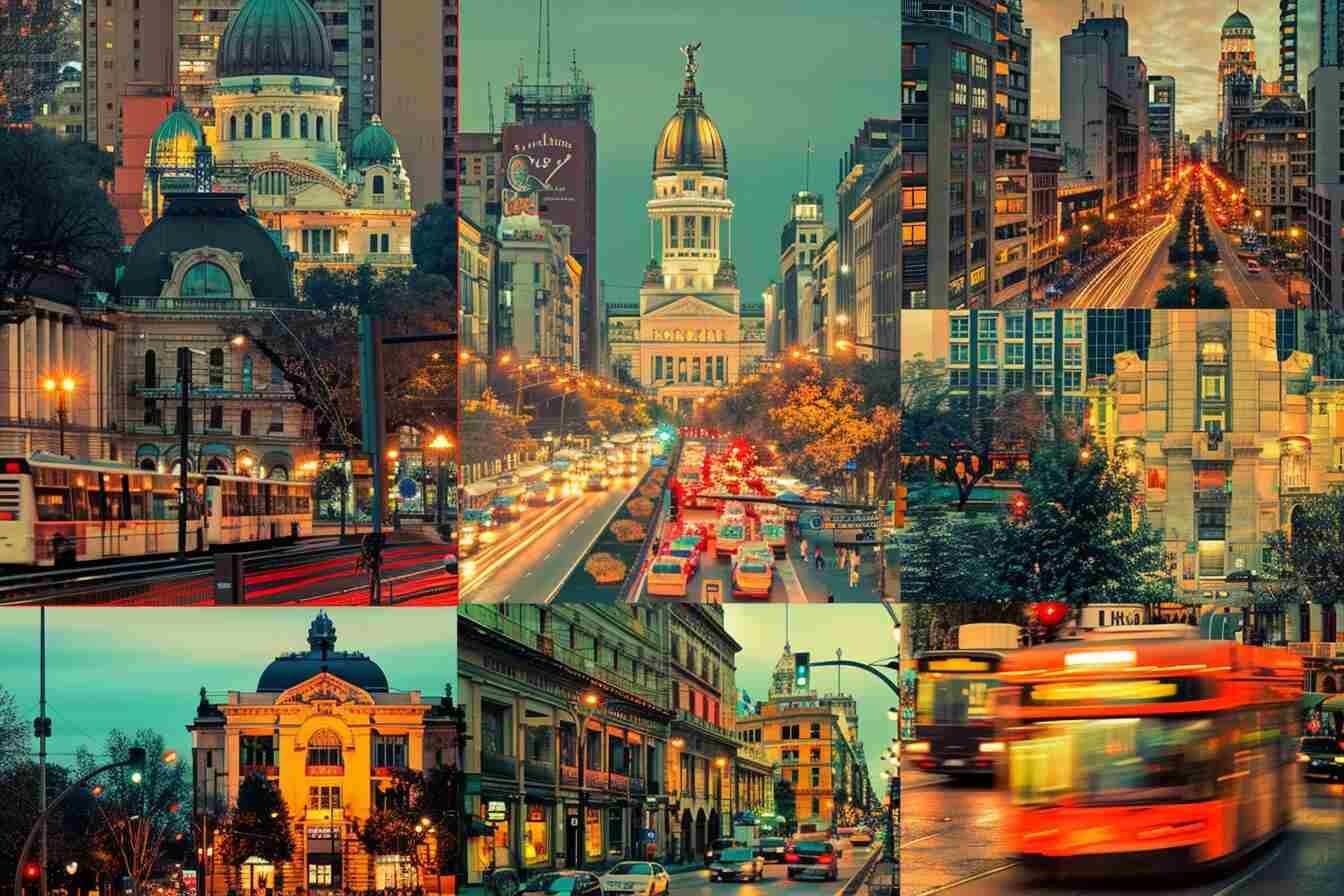Schonbrunn Palace
Schonbrunn Palace was the summer residence of the Habsburgs, the Austrian imperial family. A true feat of Baroque architecture with its 1441 rooms, this palace is listed as a UNESCO World Heritage Site and will require at least half a day to discover its magnificent gardens and apartments.
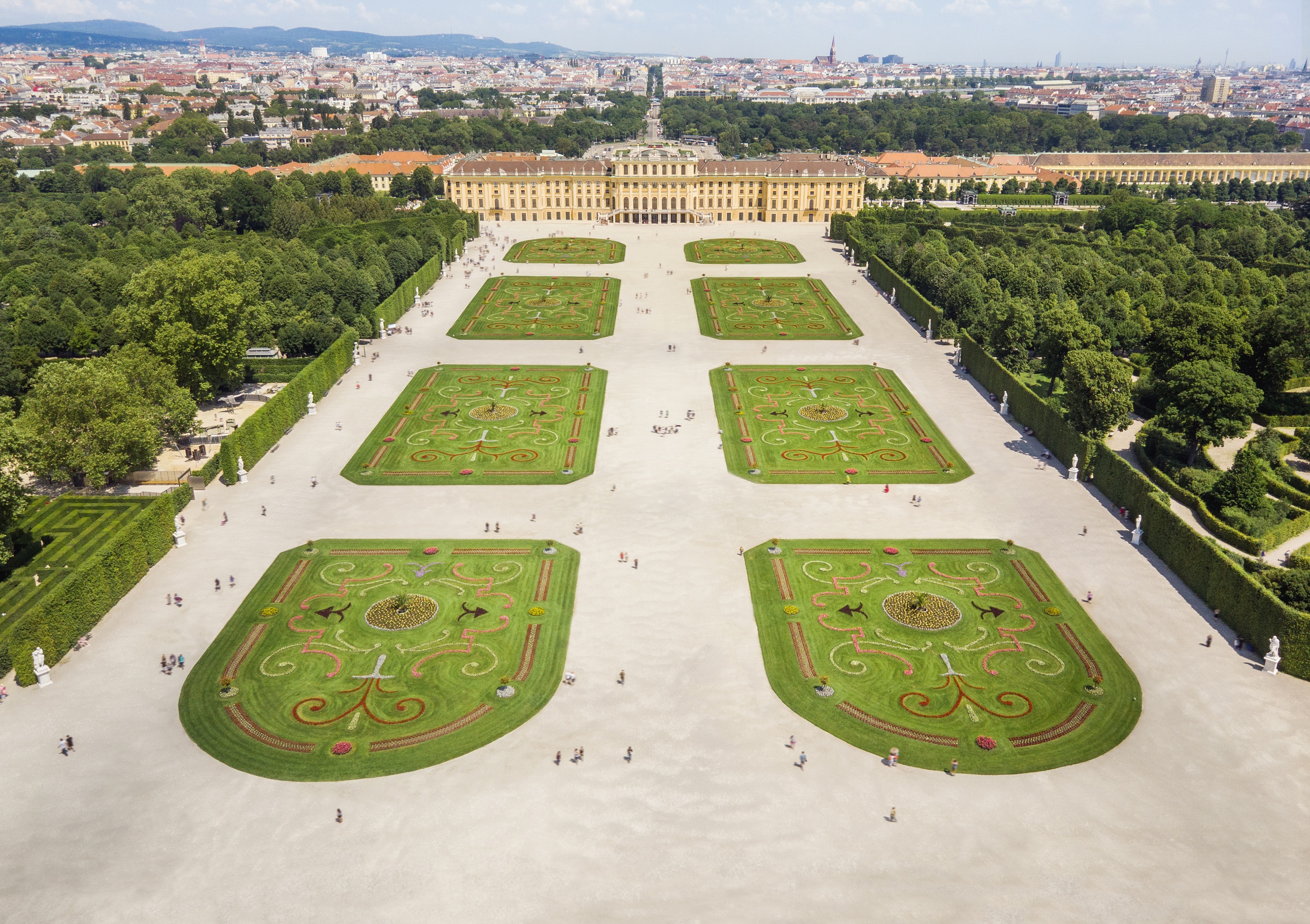
The Great Parterre – The largest open space in the gardens. Photo credit: Schloß Schönbrunn Kultur- und Betriebsges.m.b.H.
The history of Schönbrunn Palace
The origin of Schönbrunn dates back to the Middle Ages when Maximilian II bought the property in 1569. According to legend, it was when Emperor Matthias discovered a fountain there that he gave this Habsburg estate the name ‘Schönbrunn’ which means ‘the beautiful fountain’.
After the destruction of Schönbrunn in 1683 by the Ottomans, Emperor Leopold I commissioned the architect Johann Bernhard Fischer von Erlach to build a hunting lodge. Emperor Charles VI bought this pavilion in 1728 which he bequeathed to his daughter Marie Thérèse, known in history as the empress who would accede to the throne with her husband François 1er.
In the 18th century, at the instigation of Marie-Therese of Austria, the castle was enlarged and experienced many architectural transformations in a flamboyant style rivaling the Palace of Versailles.
Emperor François-Joseph I of Austria and his wife Empress Elisabeth (called Sissi) in the 19th century launched numerous renovations in this castle which they used as a summer residence.
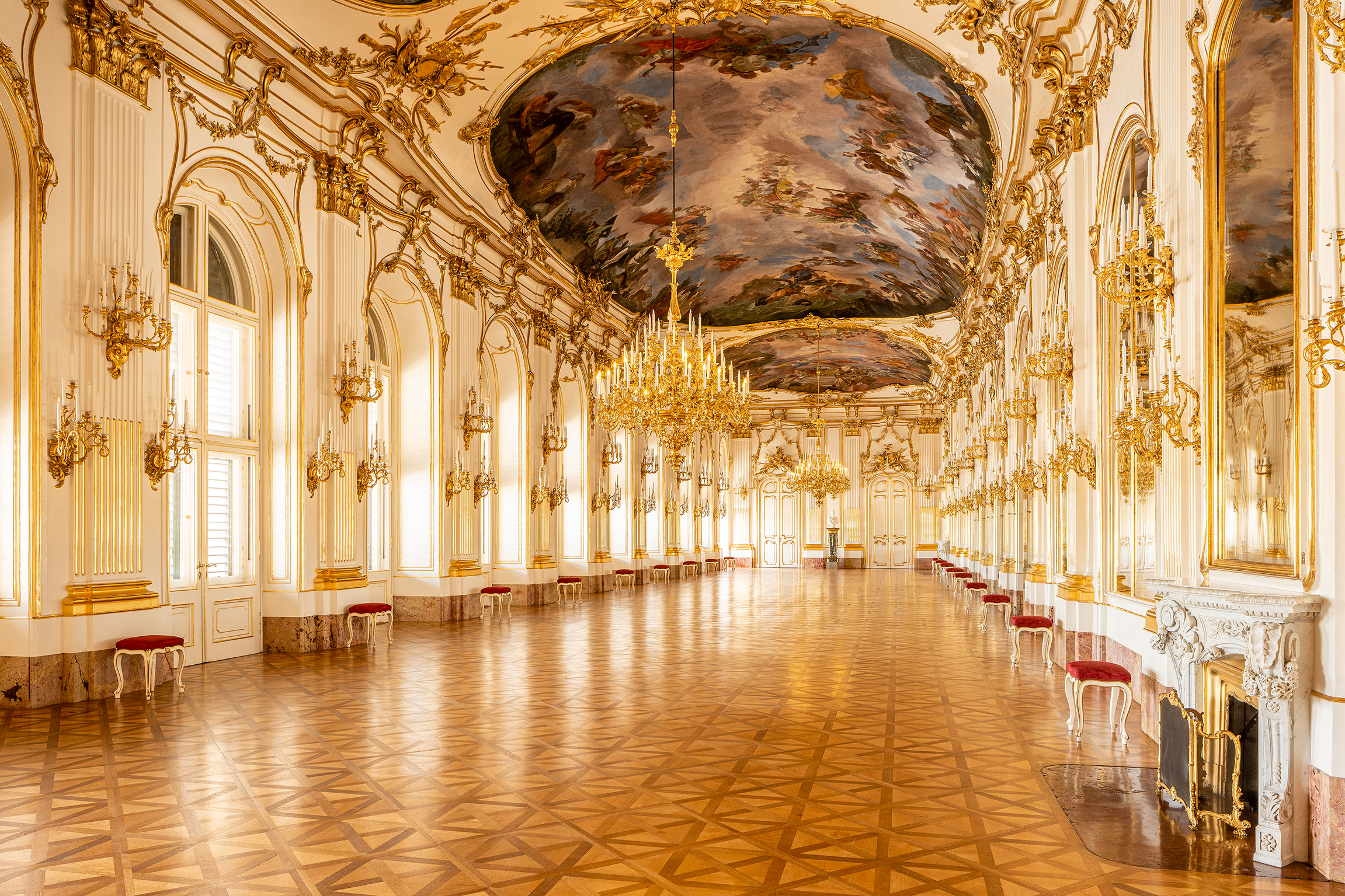
The Great Gallery, located in the heart of the castle, was used by the imperial family to hold balls, receptions and gala dinners. Developing over a length of more than 40 meters (131 ft) and a width of almost 10 meters (33 ft), the large gallery was the privileged setting for the major events of the Court. The crystal mirrors, the white and gold stuccoes and the frescoes painted on the ceiling constitute a prestigious total work of art of the Rococo era. Photo credit: Schloß Schönbrunn Kultur- und Betriebsges.m.b.H.
The Imperial Apartments of Schönbrunn Palace
Schönbrunn Palace has over 1400 rooms but only 42 rooms are open to visitors. You will discover some of the most luxurious rooms of the 18th century from the time of Marie-Thérèse and the private apartments of the imperial couple François-Joseph and Élisabeth, among others.
Salon Empress Elisabeth
Elisabeth’s reception room (Sissi). The Rococo Revival interior is a typical example of the furnishing and decoration of a state room at the Viennese court during the reign of Emperor Franz Joseph.
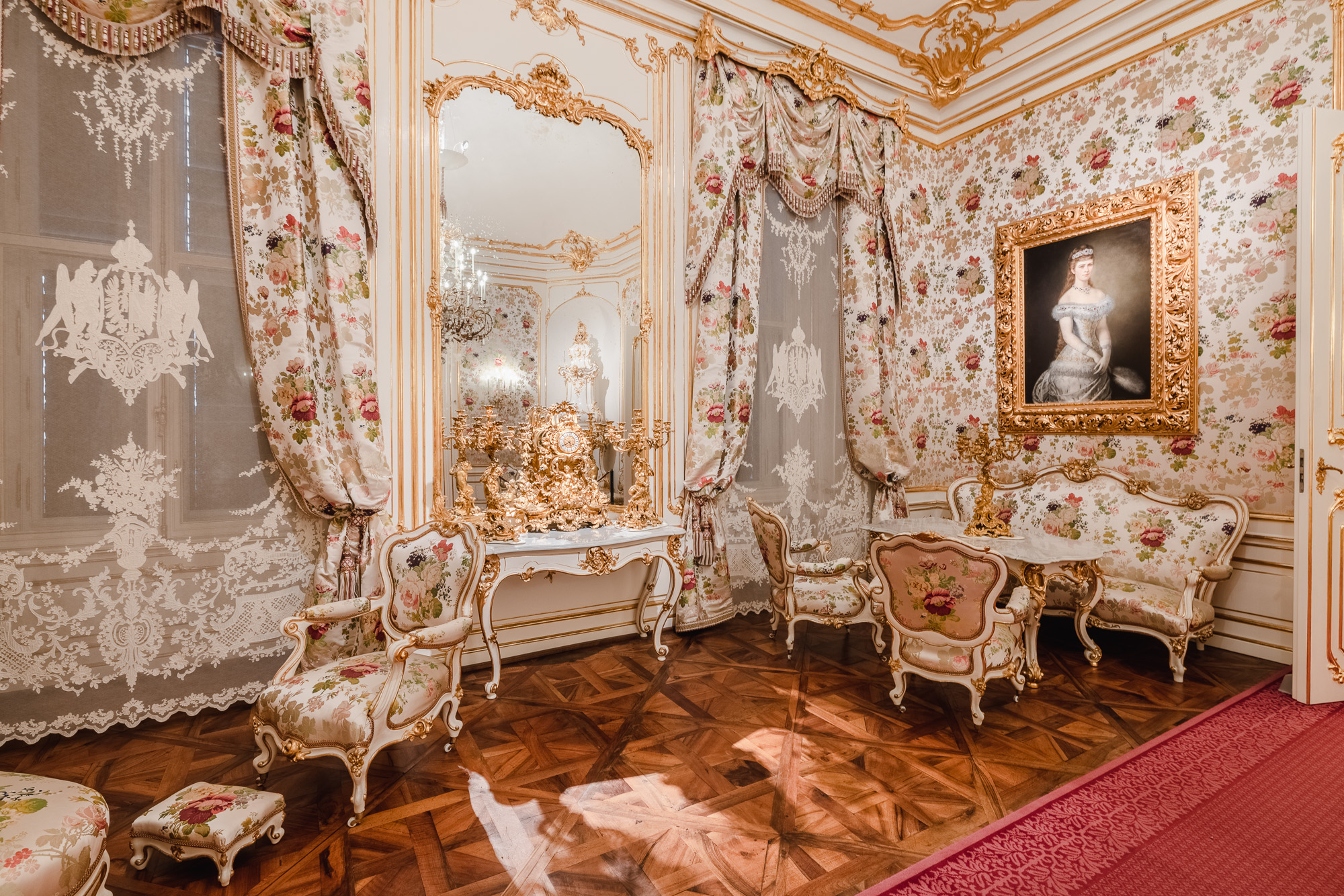
East Asian Cabinet
Beautifully decorated with white panelling with elaborately gilded rocaille work. Their decoration contains Chinese and Japanese porcelain as well as lacquerwork, silk and wooden paneling. It is likely that they were built as private rooms for the Austrian empress Maria Theresa of the Habsburg dynasty who took a special interest in Far Eastern art.
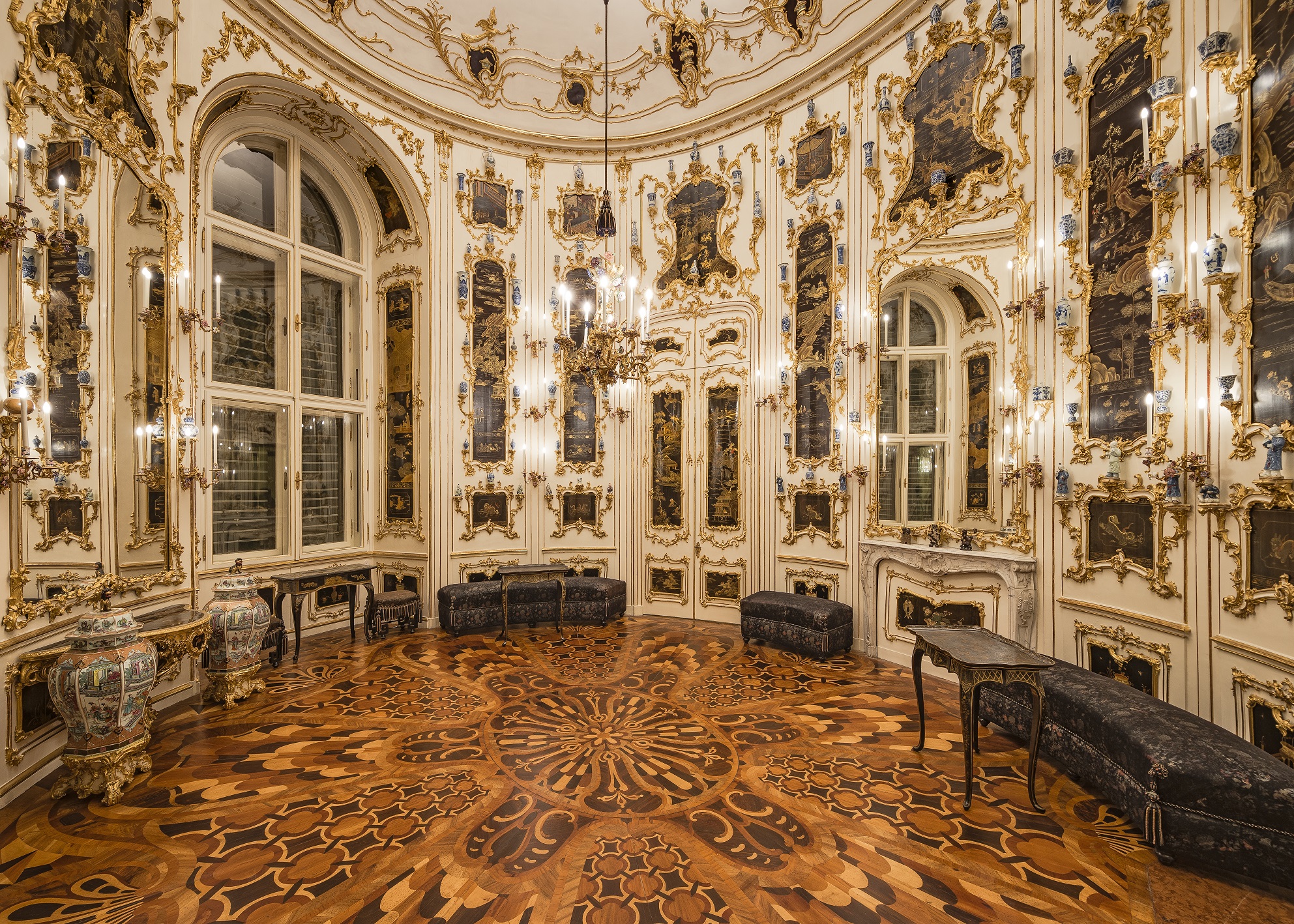
East Asian Cabinet. Photo credit: Schloß Schönbrunn Kultur- und Betriebsges.m.b.H.
Not to be missed in particular:
- The 40m long Grand Gallery where the prestigious Viennese balls took place lit by more than 1000 candles! It is also in the Grand Gallery that Mozart performed at the age of 6 before the Court and then climbed into the lap of Empress Mari Therese.
- The Salon Vieux-Laque and the Round Chinese Cabinet, decorated with porcelain and silk carpets from China or Japan by the Empress Marie Thérèse, a great lover of oriental art.
- The Napoleon Room where Napoleon François Joseph Charles Bonaparte died in 1832, son and heir of Napoleon I and his second wife, Marie-Louise of Austria.
- The Blue Chinese Room where Charles I, the last Emperor of Austria, signed in 1918 the proclamation of the Austrian Republic and therefore the end of the reign of the Habsburgs.
Palace Chapel
The palace chapel at Schönbrunn today still bears witness to the location, spatial structure and architectural articulation of the original palace designed by Johann Bernhard Fischer von Erlach around 1700. The painting on the chapel ceiling was executed by Daniel Gran, another leading artist of the Austrian Baroque era. It shows Mary Magdalene surrounded by allegorical representations of the Christian virtues of faith hope and charity.
It is a Roman Catholic chapel in Schönbrunn Palace in the 13th district of Hietzing. It is dedicated to Mariae’s wedding feast.
The Marriage Mariae patronage was founded in 1745, originally the Chapel of St. Dedicated to Mary Magdalene.
The architecture and most of the furniture in the rooms are by Johann Bernhard Fischer von Erlach. In the years 1743 to 1744, the chapel was redesigned with Nikolaus Pacassi, its surroundings redesigned, the entrances moved and in 1745 the chapel was reconsecrated. The rectangular room with a semicircular apse is located in the angle between the east wing and the central wing of the palace, projects into the main courtyard without the apse and corresponds in symmetry to the blue staircase of the palace. other corner of the main courtyard.
The chapel is barrel-vaulted with lunette with straps, the walls are structured with an order of Corinthian pilasters and a surrounding entablature and open at the level of the first floor of the castle with large rectangular windows. There is rich stucco decoration in the vault. Daniel Gran’s 1744 ceiling painting shows St. Maria Madgalena and the theological virtues of faith, hope and charity.
The high altar is probably a design by Nikolaus Pacassi: the coronation group of St. Trinity, the sarcophagus-shaped altar table and the mighty tempietto-shaped marble tabernacle. On the door is a gilded lead relief with a Pietà, probably by Franz Kohl.
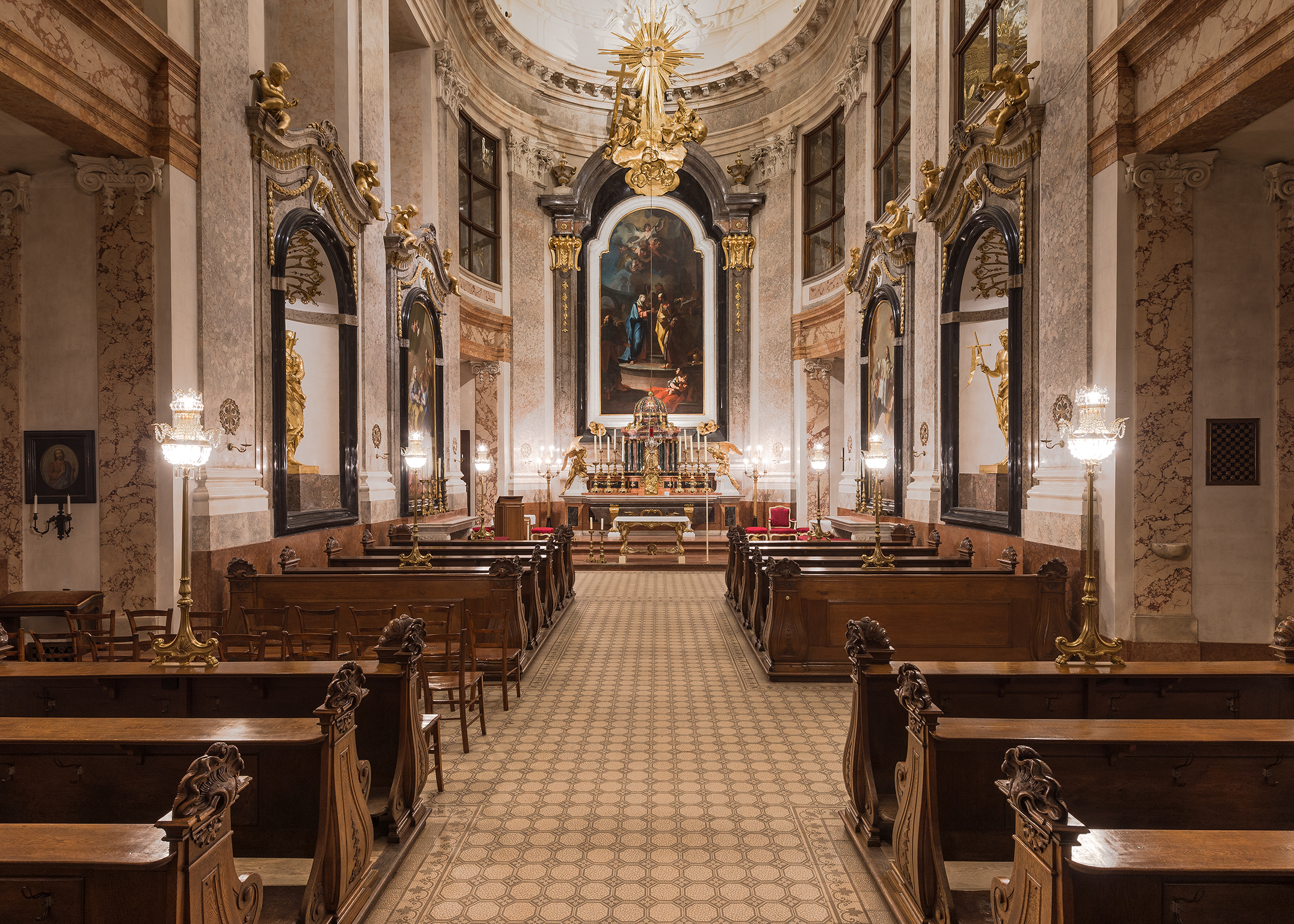
Palace chapel at Schönbrunn Palace. Photo credit: Schloß Schönbrunn Kultur- und Betriebsges.m.b.H.
Neptune fountain
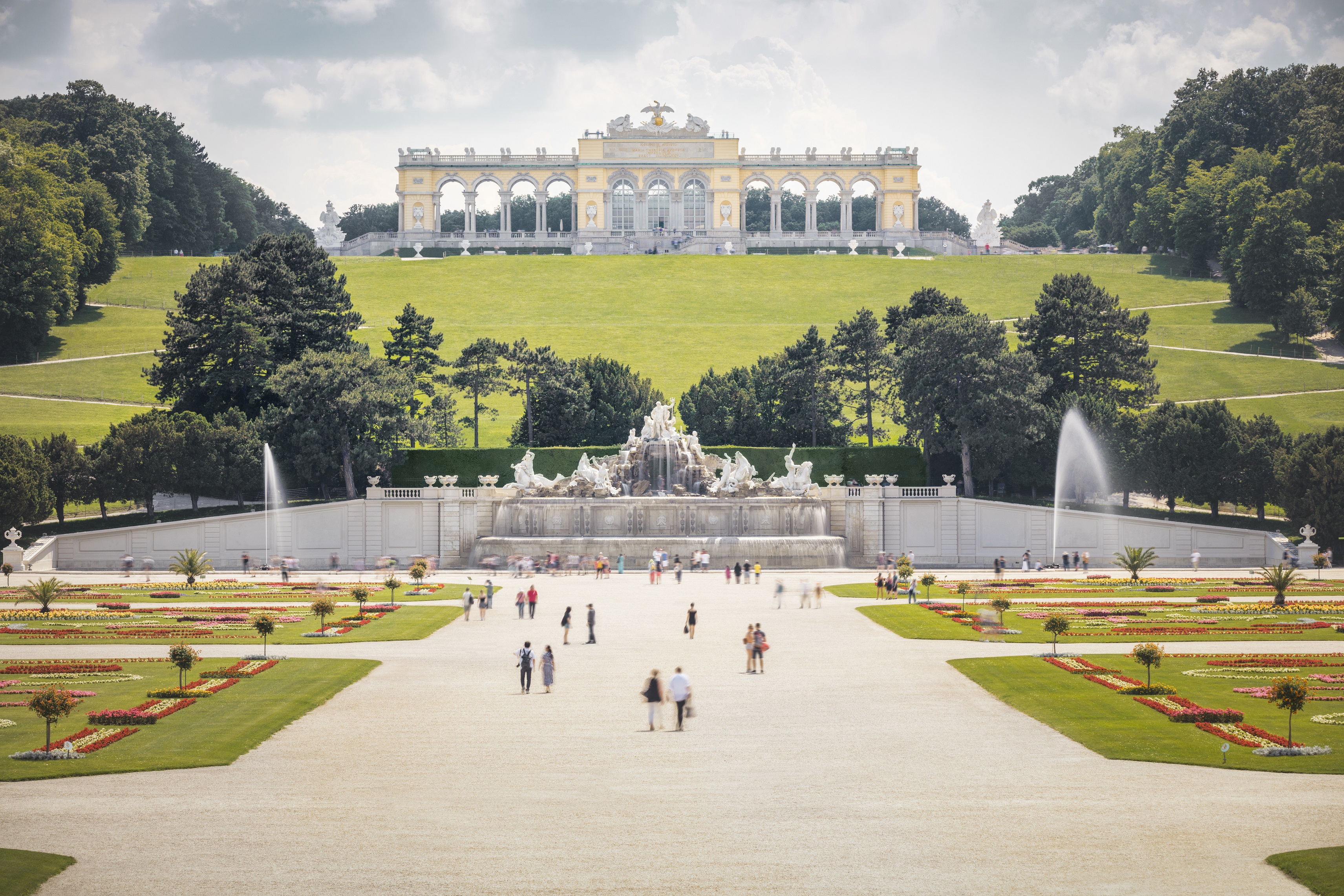
The Fountain of Neptune, the centerpiece of the park, dates from 1780. Photo credit: Schloß Schönbrunn Kultur- und Betriebsges.m.b.H.

Schönbrunn Palace in Vienna, Austria, as seen from (or rather through) Neptune Fountain, part of UNESCO World Heritage Site Ref. Number 786. Martin Falbisoner, CC BY-SA 4.0, via Wikimedia Commons
Schönbrunn Palace Park
Open to the public from 1779, Schönbrunn Palace Park is a feast for the eyes! Plan at least 1 hour to discover this park, classified as the UNESCO World Heritage Castle, which stretches 1.2 km from east to west and 1 km from north to south. A symbol of imperial power, the park includes many attractions: formal gardens, the Orangery, the palm tree greenhouse, the Gloriette, the Labyrinth and a unique zoological garden, among others.
Schonbrunn gardens. Trevor MacInnis, Public domain, via Wikimedia Commons
Northeast view of the Palm House in the park at Schönbrunn Palace. Bwag, CC BY-SA 4.0, via Wikimedia Commons
Gloriette
The Gloriette sits on top of a hill in the grounds of Schönbrunn Palace and offers a spectacular view of Vienna. Today, this sumptuous building houses the Café Gloriette. Delicious pastries and a magnificent view of Vienna await you. Do not miss the Sunday morning brunch and its live music ranging from classical to jazz.
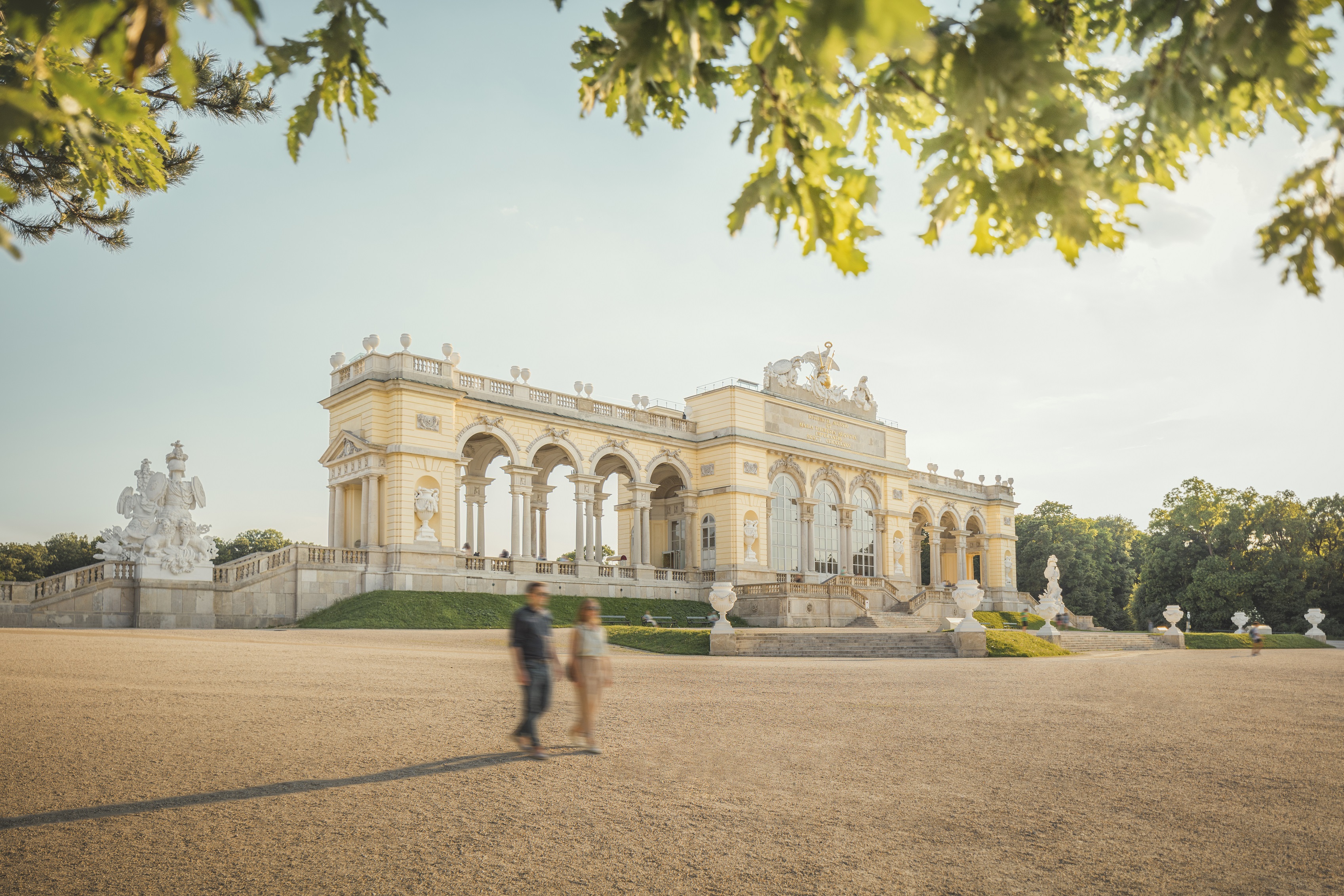
Gloriette. Photo credit: Schloß Schönbrunn Kultur- und Betriebsges.m.b.H.
How to get there and ticket entrance?
To visit it, there are different types of tickets, from the simple ticket which gives access to the basic visit (the Imperial Tour) to the Classic Pass Plus allowing you to explore certain places in the park in addition, the options are numerous… You can choose the Sisi ticket, which allows access to the Grand Tour (an “extended” visit to Schönbrunn Palace), but also to the Hofburg Palace, the winter residence of the imperial family and to the Vienna Furniture Museum. Even if you only plan to visit Schönbrunn and Hofburg, this is the cheapest ticket.
Ticket price
Imperial Tour: €22 Adults. Children (ages 6-18): € 15. Students (ages up to 22): € 18.
Grand tour: € 26 Adults. Children (ages 6-18): € 19. Students (ages up to 22): € 22.
Where to purchace?
Vienna official website: https://www.schoenbrunn.at/en/
You can download their apps
For easy use, download their apps before you visit this palace.

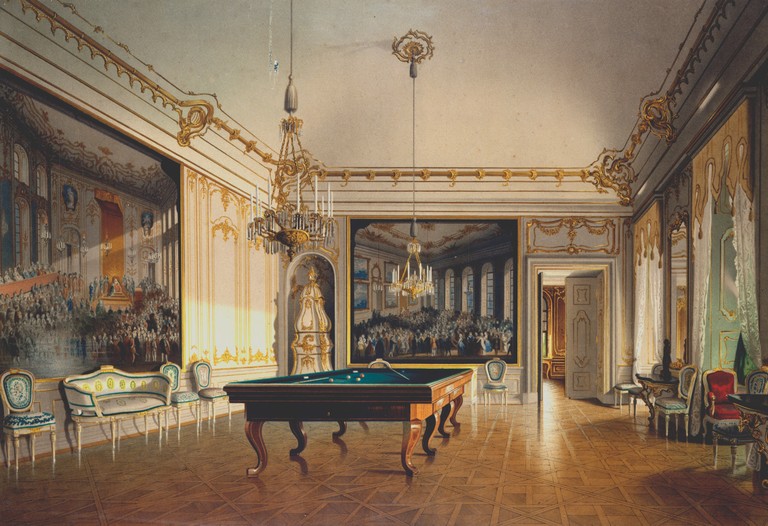
The Billiard Room (state 1860). Schönbrunn Palace, Public domain, via Wikimedia Commons
Difference between Hofburg and Schönbrunn
The Hofburg, or the other residence of the Imperial family. The difference between the two? While Schönbrunn is a huge palace located away from the city center, Hofburg is an enclave/land right in the middle of historic Vienna and the Hofburg was the winter residence of the ancient imperial family. In Hofburg they don’t the pretty French-style park of Schönbrunn. The Hofburg Palace brings together a set of buildings and museums of various styles, and today we find both the offices of the President of the Republic and the Spanish riding school or the Austrian national library. But they also house the Sissi Museum, the royal apartments and the silverware museum.
Visit Vienna: Famous Landmarks and Places to Visit in this Imperial City
http://cleverlysmart.com/europe-travel-guide-book-bucket-list-ideas-and-places-to-visit-north-south-east-west/
Sources: PinterPandai, Visiting Vienna, Vienna Tourist Board
Photo credit (main picture): Gveret Tered (CC0) via Wikimedia Commons







